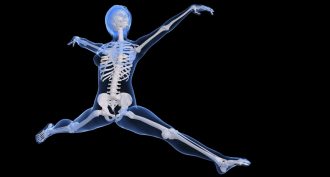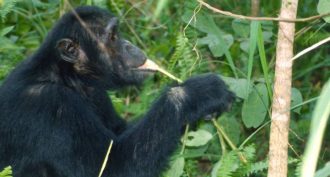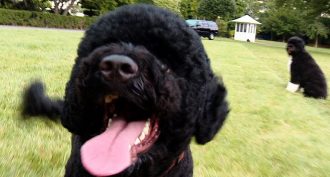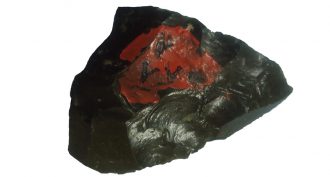Humans

Educators and Parents, Sign Up for The Cheat Sheet
Weekly updates to help you use Science News Explores in the learning environment
Thank you for signing up!
There was a problem signing you up.
-
 Life
LifeHow to reset a cell
Scientists had reported they had figured out how to turn a specialized cell into any other type of cell the body may need. All it took was an acid bath. But now in July, big doubts have emerged about the quality of that work and whether the results will hold up.
-
 Brain
BrainWhen Cupid’s arrow strikes
Scientists have begun dissecting what it means to be in love. They are finding that much of what we feel can be explained by the effects of a few key chemicals — and not just on our hearts and brains, but on our whole bodies.
By Susan Gaidos -
 Health & Medicine
Health & MedicineMany human ails are ‘scars’ of evolution
Humans suffer many physical problems that other primates don’t, from sprained ankles to hip fractures. Scientists now say you can blame these on evolution.
By Susan Gaidos -
 Animals
AnimalsDissecting the dog paddle
Scientists occasionally describe the dog paddle as a “trot,” but that’s not right. When dogs swim, their complicated leg motions look more like a frantic run.
-
 Genetics
GeneticsBlue eyes in the Stone Age
Genes from an ancient skeleton suggest that dark-skinned people may have been the first to evolve blue eyes.
-
 Health & Medicine
Health & MedicineBones: They’re alive!
This hard tissue is more than just a quiet scaffold for your organs and protective helmet for your head. It’s active and ‘chatty,’ influencing other tissues.
By Kirsten Weir -
 Health & Medicine
Health & MedicineBaseball: Keeping your head in the game
Head movements play an important role in successfully tracking lightning-fast incoming pitches.
-
 Animals
AnimalsWild medicine
Few veterinarians are available to treat sick animals in their natural environment. Fortunately, some critters can doctor themselves.
-
 Health & Medicine
Health & MedicineDoggy dust could be a good thing
The outdoor dust that dogs drag in contains a mix of microbes that helped mice fend off allergic reactions and viral infections.
-
 Genetics
GeneticsAncient DNA sparks new mystery
DNA from a 400,000-year-old leg bone found in Spain is by far the oldest recovered from pre-human ancestors. It also shows an unexpected link to later, Asian ‘kin.’
-
 Health & Medicine
Health & MedicineCool Jobs: Data detectives
Statisticians are experts in seeing the patterns hidden within the raw numbers called data. They especially excel at finding real trends, while eliminating what is actually due to chance. That’s why they offer a good reality check in any field that involves numbers.
-
 Science & Society
Science & SocietyHuman ancestors threw spears
Who threw first? Scientists had long believed that ancient people who lived 80,000 years ago were the first to throw spears with stone tips. But the discovery of 279,000-year-old stone spear tips in Ethiopia pushes that date back, and suggests prehuman species hunted with spears too.